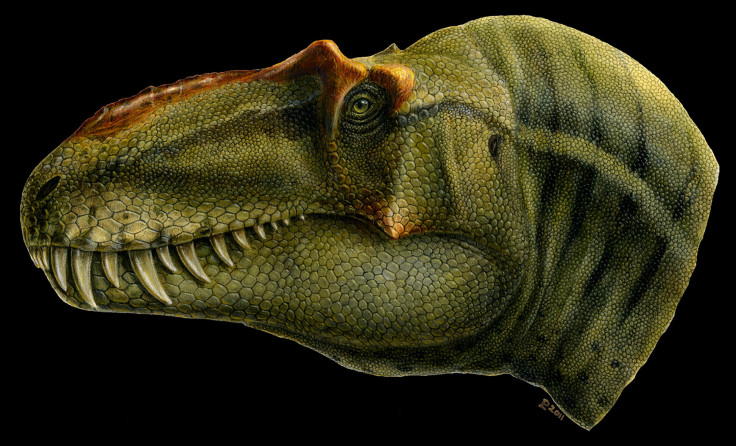Dinosaur Find: Newly Discovered T.Rex Cousin, 'King of Gore,' Unearthed In Utah

A newly discovered dinosaur has been identified as a cousin of the iconic Tyrannosaurus and is helping paleontologists flesh out the branches of the T. rex family tree.
Lythronax argestes -- the first part of the name means “king of gore,” and the second refers to a wind from the Southwest described in ancient Greek poetry -- stalked the Earth about 80 million years ago, rubbing elbows and tails with giant crocodiles, duck-billed dinosaurs and three-horned dinosaurs like Diaboceratops. The 2.5-ton L. argestes was 24 feet long and resided on an island continent known as Laramidia, which was formed by a large shallow sea that bisected much of present-day North America.
Now, one particular specimen of L. argestes has turned up in the Grand Staircase-Escalante National Monument in southern Utah. It’s the oldest member of the tyrannosaur family ever discovered. Researchers from the Natural History Museum of Utah, the Denver Museum of Nature and Science, and the University of Alberta described the titanic tyrannosaurid in a paper published on Wednesday in the journal PLoS ONE.
What makes L. argestes so special? Its head contains features that are unique among similar dinosaurs of the time, and which bring it closer to T. rex in form. L. argestes has a shorter snout and a skull that’s wider at the back. This particular skull shape has its advantages, according to Mark Loewen, a paleontologist at the Natural History Museum of Utah and the lead author on the paper.
“When you widen out the back part of the skull, your skull is stronger with regard to twisting or torsion,” Loewen says in a phone interview.
That would have made L. argestes better equipped than some of its relatives to bite down and hold on to struggling prey. This skull shape signaled a shift in killing strategy for L. argestes and other later tyrannosaurids.
“They’re not slicing animals like some of their ancestors were,” Loewen says. “Some of their predecessors [bit down on prey] more like scissors, [whereas] these guys are more like vise grips.”
A wider back of the skull also brought L. argestes’ eyes to a more forward-facing position. This eye positioning creates an overlapping field of view essential for binocular vision, which would have given the dinosaur a much better sense of depth perception -- a true asset for any predator.
The discovery is also forcing researchers to rewrite the timeline of T. rex evolution slightly. The huge, tiny-armed T. rex arose from much smaller and slimmer species -- and now it seems it may have started on its evolutionary path a bit earlier than previously assumed.
The discovery of Lythronax “shows us some things that are a little bit surprising,” Loewen says. “We had thought this evolution of T. rex happened about 10 million years later. This pushes back that interesting split between the tyrannosaurids.”
The working theory right now is that, prior to 80 million years ago, various groups of tyrannosaurids were separated by rising sea levels. Isolation and evolution allowed the separated dinosaurs to become different from each other and create new branches on the family tree.
SOURCE: Loewen et al. “Tyrant dinosaur evolution tracks the rise and fall of Late Cretaceous oceans.” PLoS ONE published online 6 November 2013.
© Copyright IBTimes 2024. All rights reserved.





















